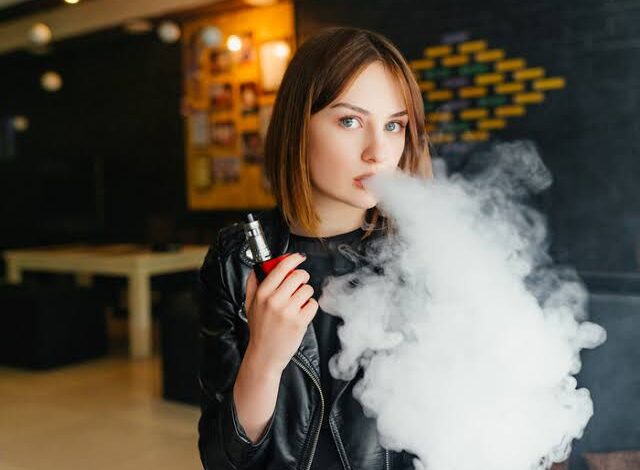Is Nicotine-Free Vaping Actually Safe?

Over the last decade, vaping has become a mainstream alternative to smoking traditional tobacco products. Many people view it as a less harmful substitute, especially for smokers trying to quit. While much of the debate around vaping centers on nicotine and its addictive qualities, another trend has emerged: nicotine-free vaping. lost mary bm6000 These products are marketed as safer, with the absence of nicotine suggesting reduced risks. But does eliminating nicotine truly make vaping safe? The answer is more complex than it might seem.
What Is Nicotine-Free Vaping?
Nicotine-free vaping refers to the use of e-cigarettes or vape pens with e-liquids that do not contain nicotine. Instead, these liquids are typically made up of propylene glycol (PG), vegetable glycerin (VG), flavorings, and sometimes additional additives.
- Propylene Glycol (PG): A synthetic liquid that helps carry flavors and produces a throat hit similar to smoking.
- Vegetable Glycerin (VG): A thicker liquid derived from vegetable oils, responsible for producing dense vapor clouds.
- Flavorings: Food-grade additives that give e-liquids their wide range of tastes, from fruit to candy to dessert flavors.
Since nicotine is the primary addictive component in traditional cigarettes, nicotine-free vaping is often perceived as a risk-free or low-risk activity. However,elux vape liquid even without nicotine, these liquids still expose the lungs to aerosols, chemicals, and fine particles that may have health consequences.
The Common Argument: “No Nicotine Means No Harm”
Supporters of nicotine-free vaping argue that it eliminates the most concerning aspect of smoking—nicotine addiction. Nicotine is known to:
- Increase heart rate and blood pressure.
- Contribute to cardiovascular disease.
- Reinforce dependence, making quitting smoking or vaping extremely difficult.
By removing nicotine, vape manufacturers suggest their products are primarily recreational, less harmful, and potentially even safe. For example, many young adults who never smoked cigarettes may turn to nicotine-free vaping under the impression that it is simply flavored vapor, akin to inhaling scented steam.
But safety is not determined solely by the absence of nicotine. The real issue lies in what is being inhaled.
Potential Health Risks of Nicotine-Free Vaping
Even without nicotine, vaping introduces other substances into the lungs. Research is still developing, but several concerns have emerged:
1. Respiratory Irritation
The process of heating PG and VG can create byproducts like formaldehyde and acetaldehyde, which are known irritants and potentially carcinogenic at high levels. While exposure from vaping may be lower than from cigarette smoke, it is not risk-free.
Some users report coughing, throat irritation, or shortness of breath, particularly when vaping heavily.
2. Flavoring Chemicals
Flavorings, while approved for ingestion in food, are not tested for long-term inhalation. A well-known example is diacetyl, a chemical used to create buttery flavors. Inhalation of diacetyl has been linked to “popcorn lung” (bronchiolitis obliterans), a serious and irreversible lung disease. Although many manufacturers now avoid diacetyl, other flavoring agents may also pose unknown risks.
3. Inflammation and Immune Response
Studies suggest that e-liquids—even without nicotine—can cause inflammation of lung tissue and impair the body’s natural defense mechanisms against infection. This may make users more susceptible to respiratory illnesses.
4. Unknown Long-Term Effects
Vaping is relatively new, with widespread use only beginning in the early 2010s. Long-term studies spanning decades are not yet available. For this reason, scientists caution that we cannot fully understand the risks of nicotine-free vaping until more evidence accumulates.
Comparing Risks: Nicotine-Free Vaping vs. Cigarettes
When discussing vaping safety, it is essential to compare it to the established harms of cigarette smoking. Cigarettes release over 7,000 chemicals, including tar, carbon monoxide, and dozens of known carcinogens.
Nicotine-free vaping eliminates:
- Nicotine addiction.
- Tar and many combustion byproducts.
- The majority of carcinogenic chemicals associated with cigarette smoke.
As a result, experts generally agree that vaping—whether nicotine-containing or nicotine-free—is less harmful than smoking cigarettes. However, “less harmful” does not mean “harmless.”
For a smoker trying to quit, switching to nicotine-free vaping could reduce health risks. But for a non-smoker, taking up vaping introduces risks where none existed before.
The Psychological and Behavioral Risks
The safety of nicotine-free vaping is not just about chemistry; it is also about behavior.
- Gateway Effect: For some, starting with nicotine-free vaping can lower the barrier to trying nicotine-containing products later. Studies have shown that teens who vape are more likely to start smoking traditional cigarettes in the future.
- Normalization of Inhalation Habits: Vaping mimics the ritual of smoking, which can reinforce behaviors associated with addiction, even if nicotine is absent.
- Youth Appeal: The sweet flavors and perception of safety have made vaping popular among teenagers. Although nicotine-free products are marketed as safe, their widespread availability can lead to accidental or intentional transition to nicotine vaping.
Thus, while the direct physical risks of nicotine-free vaping may be lower, the social and psychological consequences can still be harmful.
What Do Experts Say?
Health organizations have issued cautious statements:
- Centers for Disease Control and Prevention (CDC): The CDC warns that e-cigarettes are not safe for youth, young adults, or pregnant women, regardless of nicotine content.
- World Health Organization (WHO): The WHO emphasizes that vaping is not harmless, highlighting the risks of toxic substances found in aerosols.
- Public Health England (PHE): PHE has historically suggested that vaping is substantially less harmful than smoking, but they stop short of calling it “safe,” especially for non-smokers.
Overall, the consensus is clear: nicotine-free vaping may be safer than smoking cigarettes, but it should not be considered completely safe.
The Benefits of Nicotine-Free Vaping
To provide balance, it is important to acknowledge situations where nicotine-free vaping may serve a purpose:
- Smoking Cessation: Some smokers transition to nicotine-free vaping as a final step in quitting nicotine altogether. This can reduce dependence and still provide the sensory experience of smoking.
- Reduced Harm for Ex-Smokers: Compared to continued cigarette use, nicotine-free vaping drastically reduces exposure to carcinogens.
- Controlled Environment: For individuals who enjoy vaping as a hobby, nicotine-free products eliminate the risk of developing nicotine addiction.
These benefits, however, do not eliminate the underlying health concerns.
Final Verdict: Is It Safe?
Nicotine-free vaping is not “safe” in the absolute sense, but it is safer than smoking cigarettes. It avoids the risks of nicotine addiction and reduces exposure to many harmful chemicals found in tobacco smoke. However, it still carries risks related to lung irritation, chemical inhalation, and potential long-term health consequences that remain unknown.
For smokers seeking a harm-reduction tool, nicotine-free vaping may be a step in the right direction. But for non-smokers—particularly young people—it introduces unnecessary risks. Public health experts recommend avoiding vaping altogether unless it is part of a structured plan to quit smoking.
Conclusion
The absence of nicotine in vaping products may give the impression of safety, but “nicotine-free” does not mean “risk-free.” While it reduces some dangers compared to both smoking and nicotine vaping, the inhalation of vaporized chemicals still carries health uncertainties. The true long-term consequences remain unknown, and there is potential for unintended behavioral effects, especially among youth.
Ultimately, the safest option for non-smokers is to avoid vaping altogether. For smokers, nicotine-free vaping may represent a harm-reduction strategy, but it should not be seen as a perfectly safe alternative. Until more definitive long-term research is available, caution is the most reasonable approach.



